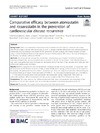Identificador persistente para citar o vincular este elemento:
https://accedacris.ulpgc.es/handle/10553/59989
| Campo DC | Valor | idioma |
|---|---|---|
| dc.contributor.author | Perez-Calahorra, Sofía | en_US |
| dc.contributor.author | Laclaustra, Martin | en_US |
| dc.contributor.author | Marco-Benedi, Victoria | en_US |
| dc.contributor.author | Pinto, Xavier | en_US |
| dc.contributor.author | Sánchez-Hernández, Rosa | en_US |
| dc.contributor.author | Plana, Núria | en_US |
| dc.contributor.author | Ortega, Emilio | en_US |
| dc.contributor.author | Fuentes, Francisco | en_US |
| dc.contributor.author | Civeira, Fernando | en_US |
| dc.date.accessioned | 2019-12-29T10:08:24Z | - |
| dc.date.available | 2019-12-29T10:08:24Z | - |
| dc.date.issued | 2019 | en_US |
| dc.identifier.issn | 1476-511X | en_US |
| dc.identifier.other | Scopus | - |
| dc.identifier.other | WoS | - |
| dc.identifier.uri | https://accedacris.ulpgc.es/handle/10553/59989 | - |
| dc.description.abstract | Background: There is no randomized clinical trials with recurrence of atherosclerotic cardiovascular disease (ASCVD) as a major outcome with rosuvastatin. In order to analyze potential differences in the clinical response to atorvastatin and rosuvastatin in secondary ASCVD prevention, we have analyzed the clinical evolution of those subjects of the Dyslipemia Registry of the Spanish Society of Arteriosclerosis (SEA) who at the time of inclusion in the Registry had already suffered an ASCVD. Methods: This observational, retrospective, multicenter, national study was designed to determine potential differences between the use of atorvastatin and rosuvastatin in the ASCVD recurrence. Three different follow-up start-times were performed: time of inclusion in the registry; time of first event if this occurred after 2005, and time of first event without date restriction. Results: Baseline characteristics were similar between treatment groups. Among atorvastatin or rosuvastatin users, 89 recurrences of ASCVD were recorded (21.9%), of which 85.4% were coronary. At the inclusion of the subject in the registry, 345 participants had not suffered a recurrence yet. These 345 subjects accumulated 1050 person-years in a mean follow-up of 3 years. Event rates were 2.73 (95% CI: 1.63, 4.25) cases/100 person-years and 2.34 (95% CI: 1.17, 4.10) cases/100 person-years in the atorvastatin and rosuvastatin groups, respectively. There were no statistically significant differences between the two groups independently of the follow-up start-time. Conclusions: This study does not find differences between high doses of rosuvastatin and atorvastatin in the recurrence of ASCVD, and supports their use as clinically equivalent in secondary prevention of ASCVD. | en_US |
| dc.language | eng | en_US |
| dc.relation.ispartof | Lipids in Health and Disease | en_US |
| dc.source | Lipids in Health and Disease [ISSN 1476-511X], v. 18 (216) (Diciembre 2019) | en_US |
| dc.subject | 320501 Cardiología | en_US |
| dc.subject.other | Rosuvastatin | en_US |
| dc.subject.other | Atorvastatin | en_US |
| dc.subject.other | Secondary prevention | en_US |
| dc.subject.other | High-potent statin | en_US |
| dc.title | Comparative efficacy between atorvastatin and rosuvastatin in the prevention of cardiovascular disease recurrence | en_US |
| dc.type | info:eu-repo/semantics/article | en_US |
| dc.type | Article | en_US |
| dc.identifier.doi | 10.1186/s12944-019-1153-x | en_US |
| dc.identifier.scopus | 85076365577 | - |
| dc.identifier.isi | 000510489600001 | - |
| dc.contributor.authorscopusid | 49864143900 | - |
| dc.contributor.authorscopusid | 10046356900 | - |
| dc.contributor.authorscopusid | 57189493797 | - |
| dc.contributor.authorscopusid | 7004430064 | - |
| dc.contributor.authorscopusid | 57203232814 | - |
| dc.contributor.authorscopusid | 22980898600 | - |
| dc.contributor.authorscopusid | 8281845100 | - |
| dc.contributor.authorscopusid | 55650129500 | - |
| dc.contributor.authorscopusid | 35517335700 | - |
| dc.identifier.eissn | 1476-511X | - |
| dc.identifier.issue | 216 | - |
| dc.relation.volume | 18 | en_US |
| dc.investigacion | Ciencias de la Salud | en_US |
| dc.type2 | Artículo | en_US |
| dc.contributor.daisngid | 1403031 | - |
| dc.contributor.daisngid | 576146 | - |
| dc.contributor.daisngid | 2491184 | - |
| dc.contributor.daisngid | 31800930 | - |
| dc.contributor.daisngid | 3549698 | - |
| dc.contributor.daisngid | 335717 | - |
| dc.contributor.daisngid | 511489 | - |
| dc.contributor.daisngid | 32138999 | - |
| dc.contributor.daisngid | 89578 | - |
| dc.description.numberofpages | 6 | en_US |
| dc.utils.revision | Sí | en_US |
| dc.contributor.wosstandard | WOS:Perez-Calahorra, S | - |
| dc.contributor.wosstandard | WOS:Laclaustra, M | - |
| dc.contributor.wosstandard | WOS:Marco-Benedi, V | - |
| dc.contributor.wosstandard | WOS:Pinto, X | - |
| dc.contributor.wosstandard | WOS:Sanchez-Hernandez, RM | - |
| dc.contributor.wosstandard | WOS:Plana, N | - |
| dc.contributor.wosstandard | WOS:Ortega, E | - |
| dc.contributor.wosstandard | WOS:Fuentes, F | - |
| dc.contributor.wosstandard | WOS:Civeira, F | - |
| dc.date.coverdate | Diciembre 2019 | en_US |
| dc.identifier.ulpgc | Sí | es |
| dc.description.sjr | 0,942 | |
| dc.description.jcr | 2,906 | |
| dc.description.sjrq | Q1 | |
| dc.description.jcrq | Q3 | |
| dc.description.scie | SCIE | |
| item.grantfulltext | open | - |
| item.fulltext | Con texto completo | - |
| crisitem.author.dept | GIR IUIBS: Diabetes y endocrinología aplicada | - |
| crisitem.author.dept | IU de Investigaciones Biomédicas y Sanitarias | - |
| crisitem.author.orcid | 0000-0003-4991-7445 | - |
| crisitem.author.parentorg | IU de Investigaciones Biomédicas y Sanitarias | - |
| crisitem.author.fullName | Sanchez Hernández, Rosa María | - |
| Colección: | Artículos | |
Citas SCOPUSTM
18
actualizado el 25-may-2025
Citas de WEB OF SCIENCETM
Citations
18
actualizado el 25-may-2025
Visitas
200
actualizado el 22-feb-2025
Descargas
121
actualizado el 22-feb-2025
Google ScholarTM
Verifica
Altmetric
Comparte
Exporta metadatos
Los elementos en ULPGC accedaCRIS están protegidos por derechos de autor con todos los derechos reservados, a menos que se indique lo contrario.
